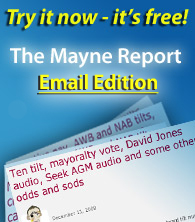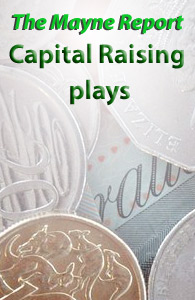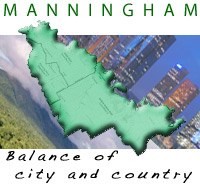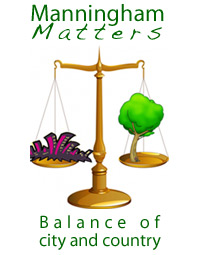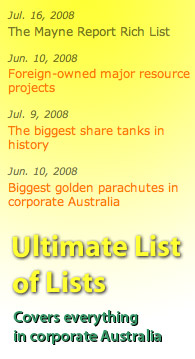The great power industry shuffle
February 7, 2025
This master-list tracks energy sector deals, including major privatisations, since 1992, including the investment bankers who advised on some of the deals. With Dan Andrews re-elected on a promise to "bring back the SEC" this is going to get interesting. All corrections and additions to stephen@maynereport.com or via Twitter to @maynereport.
November 1992: Loy Yang B partially privatised: The Kennett government picks up the Kirner Government's tortuous privatisation process of the 1000MW Loy Yang B power station and sells 49 per cent to US giant Mission Energy for $1.3 billion with an over-priced long term supply contract. CS First Boston's Nick Johnson advised the government and Macquarie's Jim McMeckan advised Mission.
May 1993: Heatane Gas privatised: the first Kennett privatisation was the $129.5m sale of bottled gas supplier Heatane Gas to Elgas, a 50-50 JV between AGL and UK giant BOC, which in 2006 was taken over by Germany's Linde Group. AGL also sold its 50% stake in Elgas to BOC/Linde for $221m in 2008.
October 1993: Boral dominates SA Gas transmission: Boral outbids Santos to secure South Australian gas distributor Sagasco for $816 million, demonstrating that much of Australia's gas infrastructure was always private, unlike in Victoria. The SA Govt sold their 31% stake into the on-market offer.
March 1994: Gladstone Power Station privatised with PPP: The 1680MW station was sold by the Goss government to Comalco, NRG and a group of aluminium traders. At the time it was the largest private power acquisition in the world but had the safety of a long-term power supply deal back to the government. UBS advised the government and JP Morgan did Comalco. They still own Queensland's largest power station to this day.
June 1994: Keating government flogs Moomba pipeline: completes the $500 million sale of the Moomba to Sydney gas pipeline to AGL with 51 per cent and GasInvest with 49 per cent. Alan James from Bain & Co (now Deutsche Bank) advised the government. See Hansard on then Federal Labor Treasurer Ralph Willis explaining the structure and lamenting the Opposition voting against a similar proposal in 1990.
March 1995: Collinsville station recommissioned: The Queensland Government awarded a $130 million contract to NRG and Transfield to refurbish and recommission the 190MW Collinsville coal-fired power station, south of Townsville. It was eventually closed in 2013. A solar power farm generating 42MW has been built on adjacent land.
May 1995: SA sells gas pipeline to Texans: Texas-based Tenneco joined with Santos to buy the Pipelines Authority of South Australia from the SA government for $304 million with Alan James from Bain & Co advising the government.
August 1995: United Energy first big Victoria foreign sale: Kansas City-based Utilicorp, AMP and NSW State Super buy Victorian electricity distributor and retailer United Energy for $1.553 billion from the Kennett Government. Deutsche's Alan James and Peter Berry from UBS advised the buyer and John Wylie and Andrew Leydon from CS First Boston advised the Kennett Government as they did for about 14 different privatisation deals listed further down.
August 1995: Victoria flogs offshore gas exploration tenements: Kennett Government sold gas exploration division GFE Resources for $56.2 million to Cultus Petroleum on the condition it spend $30m on exploration over the next 5 years. Most of the territory is now owned by Origin Energy.
September 1995: AGL and US company GPU pay $950 million for Solaris Power: this was smallest of the five Victorian electricity distributors based in Melbourne's western suburbs. Morgan Stanley's Nick Johnson advised AGL-GPU and CSFB advised the government as usual.
November 1995: Powercor sold 100% offshore for $2.15b: the largest Victorian distributor covering the western half of the state and the first to go 100% offshore with US utility PacifiCorp paying $2.15 billion. It was advised by BZW's Richard Elmslie.
December 1995: Texas Utilities buys Eastern Energy for $2.08 billion with mandate originated out of Lloyds NZ by Alan Young in conjunction with Richard Somerville and Mark Cross at Lloyds Australia.
December 1995: Citipower bought by New Orleans-based utility Entergy for $1.57 billion with advice from Hambros' David Williams, who these days is a Rich Lister chairing public companies such as Polynovo.
March 1996: PowerGen leads $2.43b purchase of Yallourn: the other consortium members were Itochu, AMP, Hastings and NSW State Super which paid up for the 1800 MW brown coal fired station in the Latrobe Valley. The buyers were advised by Peter Berry from UBS. Later sold $800m equity stake to China Light & Power for what The AFR described as an effective price of $240m, booking a $560 million loss.
August 1996: Britain's National Power and US partners Destec and PacifiCorp paid ridiculous $2.3 billion for the 30-year old Hazelwood Power station in the Latrobe Valley and it was BZW's Richard Elmslie who advised on this deal. National Power was floated by Thatcher with 52% of the UK generating market and demerged its international operations in October 2000, creating International Power as the majority shareholder in Hazelwood. French giant GDF Suez later bought International Power and it was rebranded Engie, which closed the station in 2017. Engie has been a long term dog for investors and had a market cap of around 32b Euros in late 2022.
September 1996: Canadian company Transalta opens its first Australian facility in WA which it has built up to a portfolio of 9 power generators producing around 500mW by 2025. See Transalta website.
April 1997: Edison Mission moved to 100% of Loy Yang B: the giant renegotiated long term power sale deal done with Kirner and Kennett governments and takes over a $1.1 billion liability and 100 per cent ownership of the 1000 MW Loy Yang B power station in the Latrobe Valley. Macquarie advised Edison again and CSFB advised the government. The original deal in 1992 involved the sale of 49% with a long term power purchase agreement.
April 1997: Loy Yang A privatised for crazy $4.85 billion. Chicago-based NRG and fellow US utility CMS team up with adviser Macquarie Bank to buy Loy Yang A for a staggering $4.85 billion with Macquarie advising the buyers. Macquarie's loss making stake finished up as a cornerstone assets in the float of Infrastructure Trust Australia which later morphed into Macquarie Infrastructure Group when bought infrastructure assets all over the world, specialising in tollroads.
July 1997: Boral banks $910m selling gas distribution assets, primarily in South Australia, through the Envestra float, whilst retaining a 20% stake.
October 1997: US utility GPU pays an excessive $2.55 billion for monopoly transmission company Powernet Victoria. JP Morgan's Chris Sadler advised GPU. This assets later finished up with Singapore Power which then floated Ausnet which was later bought by Canadian giant Brookfield in 2021-22.
November 1997: Infratil and NZ company Contact Energy pay $391 million for Southern Hydro, Victoria's small hydro power outfit. Bruce Harker from Morrisons in New Zealand advised Contact.
January 1998: AGL buys out Energy Initiatives, its 50% partner in Victorian electricity distributor Solaris, for $219 million, giving it a 58 per cent profit on its equity as the original $950 million acquisition in 1996 was heavily geared.
March 1998: AMP and UtiliCorp partially float United Energy raising $390 million at $2.25 a share and confirming a 20 per cent plus profit on the equity in their initial $1.553 billion purchase in August 1996. Float led by Alan James and Mark Cross of Deutsche Bank and JB Were.
March 1998: WA Govt pockets $2.47b selling Australia's longest gas pipeline: Epic Energy, a consortium including American power giants El Paso and Consolidated Natural Gas, along with AMP, NSW State Super and Hastings, pay a ridiculous $2.47 billion for the Dampier-to-Bunbury natural gas pipeline. Andrew Sutherland from JP Morgan advised the WA Government and Alan James and Ross Johnstone from Deutsche advised the over-zealous buyers who later went into receivership. Then AGL CEO Len Bleasel claimed they overpaid by about $600m.
Mid-1998: BHP dumps Pilbara power stations: BHP sold off the Port Hedland and Newman power stations in WA to US firm Duke Energy.
November 1998: Citipower sold by New Orleans-based Entergy for $1.7 billion to fellow US utility AEP, booking a tiny profit. Peter Berry from UBS advised Entergy and John Wylie and Andrew Leydon from CSFB got a second crack at this asset for the buyers after selling it the first time for the Kennett Government. AEP remains a listed US giant to this day but later sold Citipower to Hong Kong giant CKI.
December 1998: Scots take over Powercor's US parent: Scottish Power buys PacifiCorp for $US7.8 billion in an all scrip merger which was also the first foreign takeover of a major US utility. The Scots therefore inherited Victoria's Powercor, the largest of the 5 Victorian distributors, which PacifiCorp had bought in November 1995 for $2.15 billion. Powercor is today 51% controlled by Kong Kong giant CKI and 49% owned by KKR and the Ontario Teachers Fund.
February 1999: Texas Utilities doubles down with $1.62b Victorian gas buy: after spending $2.08b on Eastern Energy, TXU snapped up the first of Victoria's three gas retailer/distributors, Westar/Kinetik, for $1.62 billion. Ross Johnstone, Alan Young and Rob Bishop from Deutsche advised the Texans.
March 1999: UtiliCorp follows Texans into Victorian gas: Kansas-based UtiliCorp and its local partner, AMP, paid $1.97 billion to snare the second of Victoria's gas retailers and distributors, Multinet/Ikon, once again doubling down after earlier paying $1.553 billion for United Energy. Alan James from Deutsche was the Utilicorp adviser as usual whilst Wylie and Leydon had the usual government brief.
March 1999: Boral/Origin finally wins a Victorian privatisation bid: Boral and Envestra buy the third Victorian gas distributor and retailer, Strataus/Energy 21, for $1.67 billion which is now part of the Boral spin-off Origin Energy. Macquarie Bank advised Boral/Envestra thanks to the Tony Berg connection.
April 1999: Victoria exits gas power stations for $350m: Ecogen Energy, owner of Victoria's two small gas-fired power stations, sold by Kennett Government to US utility AES for $350 million.
May 1999: And finally, Victoria exits gas transmission monopoly: Gasnet, Victoria's monopoly gas transmission business, sold to GPU for $1.025 billion in the last of the Kennett sales. Wylie and Leydon stood back and let CSFB's Kyle Mangini handle this sale, whilst GPU was advised by one of the JP Morgan's predecessor firms, Ord Minnett or Chase.
June 1999: A tiddler to create more Victorian gas competition: the final Kennett Government privatisation saw Queensland's controversial state-owned energy company Energex pay $29.25 million for the rights to buy 10 petejoules of gas from Gascor for the next four years until the market was fully contestible. This was Alan Stockdale's way of trying to bring a fourth competitor into the gas market.
July 1999: first gas flows from the 200 pj Iona gas storage facility near Port Campbell in Victoria.
December 1999: No Victorian-style distribution break ups in SA: Li Ka-Shing led Cheung Kong Infrastructure and Hong Kong Electric Holdings pays $3.5 billion for the SA Government's ETSA state-wide transmission and distribution assets. Was structured as a 200 year lease and UtiliCorp was the under-bidder with press claims it offered $3.6 billion. CKI/HKEK were advised by ABN Amro and Ray Spitzley from Morgan Stanley advised the SA Government.
1999-2000: Alliant Energy Corporation progressively bought Southern Hydro's three partner companies that formed the Southern Hydro Partnership, having bought the Contact Energy share in 1999 and the Infratil share in 2000.
January 2000: AGL pays $175 million to Hong Kong-based CKI for South Australian electricity retailer ETSA Power.
February 2000: Shell, United Energy (AMP and UtiliCorp) and Woodside put retail gas and electricity assets into Pulse Energy with Mark Cross and Alan James from Deutsche providing the advice. Ross Johnstone, Alan Young and Rob Bishop from Deutsche advised UtiliCorp.
February 2000: Boral demerges with its energy division Origin after advice from Macquarie Bank in a deal that eventually worked wonders for shareholders and vindicated Tony Berg's much-criticised tenure as CEO.
April 2000: United Energy spins off 34 per cent of telco division Uecomm in a float at $1.90 a share but it quickly tanks and the $1 billion float valuation promoted by advisers led by Alan James and John White of Deutsche Bank becomes a joke.
May 2000: Texas Utilities pays $295 million to the South Australian government for a 100 year lease to operate the 1280mW gas-fired Torrens Island power station. As usual, Ray Spitzley from Morgan Stanley advised the SA Government and Citibank's Chris Sadler helped the Texans out.
June 2000: GPU booked a $450 million loss when it sold its electricity transmission business, PowerNet Victoria, to Singapore Power for $2.1 billion. Sing Inc were advised by Morgan Stanley's Sheldon Trainor and Alan Young, then with Deutsche, advised the seller.
July 2000: AGL spins off its pipeline assets into the Australian Pipeline Trust with Catherine Brenner (later the chair of AMP) from ABN AMRO the lead investment banker on the deal.
October 2000:Utilicorp (now Aquila) and AMP pay $4.38 a share or $319 million for a cornerstone 45% shareholding in WA gas utility Alinta Gas before it was floated by the Court government at the knockdown price of $2.25 a share, meaning taxpayers only received $517 million. Mark Cross from Deutsche advised the WA Government and AMP was the official advisor to Aquila back when George Trumbull was dreaming of building an in-house investment banking team.
November 2000: China Light & Power progressively buys 92% of Yallourn power station for $1.84 billion as PowerGen, Itochu, AMP, Hastings and NSW State Super cop a $500 million loss. CLP advised by Bob Rawlinson from JP Morgan and the sellers were helped by Dresdner and Richard Elmslie from UBS.
November 2000: Queensland's Powerlink, ABB and Macquarie Bank form a consortium and pay $938 million for South Australia's electricity transmission company ElectraNet.
December 2000: Scottish Power sells Powercor for $2.32 billion, barely more than its $2.15 billion 1995 sale price to what was then PacifiCorp, to the Hong Kong consortium Cheung Kong Infrastructure Holdings and Hongkong Electric Holdings. Having got to know Powercor when selling it, John Wylie and Andrew Leydon from CS First Boston advised Scottish Power and Richard Wagner from ABN Amro advised the Hong Kong duo.
April 2001: Origin Energy buys Powercor's 582,000-customer retail business from Lia Ka Shing's Hong Kong empire for $137 million as part of the deal with Scottish Power.
Mid-2001: The government-owned Tasmanian Hydro Electric Corporation hands 120mW Bell Bay power station to Duke Energy for conversion to natural gas, complete with a long term management contract.
November 2001: US utility GPU floats Gasnet on the ASX at $2 a share for an enterprise value of about $860 million, crystallising a $150 million loss after it paid $1.05 billion for the monopoly Victorian gas transmission company to the Kennett Government in 1999. All up, GPU ended up losing about $600 million buying the gas and electricity transmission monopolies in Victoria. It was taken over at $3.10 a share by APA Group in 2006.
Early 2002: The 840mW Millmerran power station in Queensland, the only one built by the private sector, is opened. The current owners are Intergen Australia, which is jointly owned by US firm InterGen and China Huaneng Group.
July 2002: AGL buys Pulse for $880 million from Shell, Woodside and United Energy. John Wylie and Andrew Leydon from Carnegie Wylie did the selling and JP Morgan advised AGL.
July 2002: AEP sells CitiPower to Li Ka-Shing led Cheung Kong Infrastructure and Hong Kong Electric Holdings for $1.53 billion, booking a $US125 million loss mainly because the Australian dollar was so low at the time. The retail assets were on-sold to Origin Energy. AEP was advised by Richard Wagner from ABN Amro.
August 2002: US company Edison Mission and Kiwi outfit Contact Energy open new $165 million, 300-megawatt Valley Power peaking plant at Loy Yang B. The ACCC required International Power and Mitsui to dispose of its 60% stake in Valley Power when they acquired Edison Mission's Australian portfolio of generating assets in late 2004.
October 2002: The Murraylink transmission line between Victoria and SA was commenced in a development which was a partnership of Hydro Quebec and SNC Lavalin.
December 2002: US utility AES sells its Mt Stuart power station in Queensland to Origin Energy for $93 million and its two Victorian gas-fired plants at Newport and Jeeralang to a consortium of Babcock & Brown and Prime Infrastructure Group for $202 million. However, AES booked a 40 per cent profit from the $104 million in equity it collected from the two deals, making it a rare winner.
January 2003: $1.5 billion Millmerran power station in Queensland begins operating. The 840mW station is the largest "greenfield" private investment in electricity generation in Australia (as opposed to purchasing an existing facility from a government utility). It was built by a InterGen/Shell-Bechtel joint venture and is owned by a partnership made up of InterGen, Marubeni, GE Capital, Tohoku Electric and EIF.
March 2003: Alliant Energy sells Southern Hydro to government-owned Kiwi utility Meridian for $550 million which was close to what they paid in 1999 and 2000 to another Kiwi company Contact Energy and utility company Infratil. Alan Young from Deutsche advised Meridian and Richard Wagner at ABN Amro advised Alliant.
April 2003: UtiliCorp (now Aquila) pockets $980 million selling its Victoria and WA electricity and gas assets to AMP and Perth-based Alinta Gas. Having brought UtiliCorp in, Alan James (now at Citibank) advised on the sale while Richard Elmslie at UBS advised AMP and Macquarie advised Alinta. Here is the Alinta announcement as it become a much bigger company. United Energy was taken over for $3.15 a share having been floated in 1998 at $2.25 a share.
July 2003: The giant Loy Yang A power station in Victoria conditionally sold by CMS-NRG-Horizon for $3.5 billion to a consortium including AGL, Tokyo Electric and the Commonwealth Bank for $3.5 billion, crystallising a $1.4 billion loss in just 6 years. The deal was finally approved and completed in April 2004. Jeremy Kirkwood from Morgan Stanley (Alan Stockdale's former chief of staff) advised CMS-NRG and JP Morgan advised the AGL consortium.
February 2004: China Huaneng Group, advised by Alan Young from Deutsche, bought 50% of InterGen Australia for $700 million. Rob Shorten (then ANZ) advised InterGen.
March 2004: Alinta paid $1.69 billion for US company Duke Energy's gas pipeline and power plants in Australia and New Zealand. Macquarie Bank advised Alinta and JP Morgan's David Di Pilla (of Chemist Warehouse fame) and Garry Lester ran the sales process for Duke as it completely exited the Australasian market. See SMH report.
April 2004: Westpac-controlled Hastings Funds Management pays $663 million for a portfolio of gas pipelines from troubled Epic Energy which simultaneously toys with receivership after failing to sell its main WA asset. John Wylie and Andrew Leydon from Carnegie Wylie advised Epic whilst Westpac and Hastings didn't need external advice as it was a related party transaction.
April 2004: Singapore Power buys TXU's Australian business for $5.1 billion, booking a $513 million profit although the business repatriated no dividends back to Texas during its eight year operation. CSFB's Nick Schiffer advised the Texans and Sheldon Trainor from Morgan Stanley advised the Singaporeans.
July 2004: Origin Energy bids $2.5 billion for Contact Energy, New Zealand's largest listed power generator, but only ended up with 51 per cent for a cost of about $1.5 billion, as the US vendor Edison Mission explains in this SEC release. Alan Young, formerly Deutsche and now running JP Morgan, advised Origin.
July 2004: The Babcock-managed Prime Infrastructure Group paid $442 million for a 53.7% share of Powerco Ltd, New Zealand's second-largest energy networks company, giving it an enterprise value of $1.7 billion.
September 2004: Alinta, Alcoa and the recently listed Diversified Utilities Energy Trust, backed by Macquarie Bank and AMP Capital, buy the Dampier to Bunbury Natural Gas Pipeline – Australia's biggest gas transmission system – in a deal that pays out the $1.85 billion bank debt owed by unhappy US firm Epic Energy.
October 2004: UK giant International Power, which already owned Hazelwood, teamed up in a 70-30 JV with Mitsui and bought the Australian generating assets of US firm Edison Mission, including Loy Yang B in the Latrobe Valley, but not before this battle with the ACCC which resulted in undertakings. The AFR reported at the time that Edison Mission received about $8 billion for its entire non-US portfolio with the Australian portfolio thought to be worth around $2.4 billion.
March 2005: Singapore Power sells the Victorian retail and generation assets formerly owned by TXU to China Light and Power for $2.2 billion. Dan Walters and Philip Jackson from JP Morgan advised CLP. See ACCC assessment of the deal.
April 2005: Spanish conglomerate Acciona bids $870 million for renewable energy company Pacific Hydro, but is then trumped by Gary Weaven and a group of industry funds which held a 30% stake and paid $5 a share for the rest. Carnegie Wylie advised Pacific Hydro, Citigroup advised the Spanish and Craig Jensz from Gresham advised IFM.
September 2005: China Light & Power invests $110 million for a 50% stake in Hydro Tasmania's Roaring 40s Renewable Energy business.
October 2005: $700 million raised in the public float of Alinta Infrastructure.
November 2005: AGL pays New Zealand company Meridian Energy $1.5 billion for Southern Hydro's renewable business of 737mW of power across Victoria, NSW and South Australia, which comprised 11 hydro projects and what was then Australia's largest windfarm at Wattle Point in SA. See ASX announcement.
November 2005: Hong Kong conglomerate CKI announces float of 50% of Victorian and South Australian electricity distribution businesses in a $1.5 billion-plus raising through a float of Spark Infrastructure. Deutsche Bank provided the advise.
November 2005: Singapore Power raised $1.3 billion though the sale of 49% of its largely Victorian gas and electricity assets in a partial float of a business called SP Ausnet, which was subsequently privatised by Brookfield in an $18 billion takeover completed in early 2022.
December 2005: the Queensland government-owned Ergon Energy announce a $103 million takeover of Victorian-based power retailer Australian Energy Limited, trading as Powerdirect.
December 2005: NSW government announces plans to float its 58% stake in the Snowy Mountains Hydro-Electric scheme with JP Morgan managing director Alan Young providing the advise. Alas, Alan Jones cans the deal.
February 2006: AGL releases information memorandum for demerger to create separate energy and infrastructure companies.
February 2006: Origin unveils complex dual listed company structure to mop up the rest of New Zealand subsidiary Contact Energy.
February 2006: AlintaGas splashes more than $1.2 billion building a blocking stake in AGL and then proposes its own merger and then separation to create an energy and infrastructure arm.
March 2006: Australian Pipeline Trust buys the 180km underground Murraylink power connector linking the Victorian, South Australian and NSW power markets for $153 million. APT was advised by Pacific Road Corporate Finance and the asset was built for $177 million by Hydro Quebec.
April 2006: AGL and Alinta smoke the peace pipe and agree to a merger and then break-up of their infrastructure and energy assets.
May 2006: British group National Grid finally opens Basslink, the $780 million undersea cable link between Victoria and Tasmania, after massive delays and budget blowouts but managed to exit profitably a few years later for more than $1 billion.
June 2006: Snowy Hydro prospectus pulled after Prime Minister does a huge backflip and Victoria and NSW are forced to follow suit, largely thanks to a campaign by shock jock Alan Jones. Nick Schiffer from CS First Boston was advising the NSW government and Alan Young from JP Morgan was looking after Snowy itself. In addition the joint lead managers were Macquarie, UBS and Goldman.
June 2006: Babcock & Brown pays $385 million to Chicago-based NRG for the coal-fired Flinders power station complex near Port Augusta in South Australia, which has a total capacity of 760mW.
August 2006: ERM Power and Babcock & Brown opened the new $300 million 450mW gas fired Braemar Power Project in Queensland after an efficient 15-month construction timetable.
August 2006: Australian Pipeline Trust, now renamed APA Group, drops Babcock & Brown as a partner and lifts its bid for Gasnet to $3.10 a share, securing control of the company for $452 million (plus more than $500m in debt) and trumping an earlier bid from the Commonwealth Bank's Colonial investment division. GasNet was floated by US utility GPU at $2 a share in 2001.
October 2006: Australian Pipeline Trust, now renamed APA Group, pays $535 million to the Queensland Government for the Allgas energy distribution business.
November 2006: Fresh from its AGL merger and then demerger, infrastructure giant Alinta launches $480 million mop-up bid for its smaller 20% owned associate Alinta Infrastructure Holdings.
November 2006: Origin Energy pays $1.2 billion to the Queensland Government for Sun Retail, the major part of the old Energex retail operations. AGL pays $75 million for the smaller Sun Gas Retail business with Macquarie advising Origin and McDiarmid of Rothschild advising the Queensland Government.
December 2006: Babcock & Brown Power raises $446 million in a floated vehicle which has an interest in eight power stations. The deal involves it buying the Redbank co-generation plant in NSW from Babcock & Brown. This highly leveraged business later went broke, along with the rest of the Babcock empire.
December 2006: Australian Pipeline Trust buys the DirectLink electricity transmission asset linking the NSW and Queensland power grids for $170 million from the NSW Government-owned Country Energy, Hydro Quebec International Group and Fonds de Solidarites des Travailleurs de Quebec.
January 2007: AGL Energy proposes a $12 billion merger with Origin Energy, which is later abandoned.
February 2007: AGL buys retailer Powerdirect from the Queensland Government for an exorbitant $1.2 billion. Bruce McDiarmid of Rothschild advised the Queensland Government.
March 2007: Queensland Gas shareholders approve issuing AGL 27% of the company for $330 million. Alan Young and Aaron Kenavan (JP Morgan) advised QGC, and Daniel Kleijn (UBS) advised AGL.
July 2007: British company National Grid sells the Basslink electricity interconnector between Tasmania and Victoria to a Singapore Government-led investment vehicle, CitySpring Infrastructure Management Pte Ltd, for $1.175 billion. Goldman Sachs advised CitySpring. Basslink later went broke and was bought by APA in 2022.
August 2007: Alinta shareholders vote in favour of $15 billion carve up of assets to Singapore Power and Babcock & Brown. The Singapore Government pays $8.3 billion in cash for the distribution and transmission assets across the country and various Babcock & Brown investment vehicles offer a confusing shower of paper for the generating assets. Controlling stake in gas pipeline company APA also distributed to Alinta shareholders. Alan Young and Daniel Walters (JP Morgan) and Andrew Leyden and John Wylie (Lazard) advised Alinta.
August 2007: Transfield Services books a $75 million profit partially floating 51% of its infrastructure assets, including five power stations, as you can see from this announcement. See prospectus for float of Transfield Services Infrastructure Fund at $2.10 a share. It was later taken over by a Thai company at just 85c a share in June 2011 so a bad experience for public investors.
September 2007: SP Ausnet announces proposed $8.3 billion purchase of Alinta distribution assets from 51% parent Singapore Power. See ASX presentation.
December 2007: SP Ausnet aborts $8.3 billion deal with parent Singapore Power due to wobbling debt markets and institutional opposition. Turns out the Singapore Power and Babcock & Brown pre-GFC purchase of Alinta was a disaster and Macquarie was extremely lucky to be the under-bidder.
December 2007: NSW announces the proposed $15 billion sale of its generating and retail assets. Nick Schiffer (CS) and Andrew Leyden (Lazard) led on the sellside.
April 2008: BG, the old British Gas which was privatised by the Thatcher government, launches $13 billion bid for Origin Energy that ultimately failed, even after it later raised the bid to $15.50.
September 2008: BG surrenders hostile takeover bid for Origin Energy which sealed a $10 billion tie-in with US giant Conoco-Phillips to develop Queensland LNG assets.
October 2008: AGL sold its 50% stake in bottled gas provider Elgas to BOC/Linde for $221m in 2008.
December 2008: AGL sells its portfolio of PNG oil and gas assets for $1.13 billon to Merlin Petroleum and Nippon Oil. See ASX announcement.
April 2010: Shell and Petro-China complete $3.5 billion takeover of Queensland coal seam gas company Arrow Energy.
November 2010: private equity firm TPG lead a $2 billion restructuring of Alinta Energy, the old Babcock & Brown Power, in one of the most complicated transactions ever seen in Australia.
December 2010: Indian power company Lando Infratech pays $850 million for Griffin Coal's West Australian assets, which spectacularly collapsed in 2022.
December 2010: Origin Energy outbid AGL and agrees to pay NSW government $3.25 billion for electricity distribution businesses Integral Energy and Country Energy.
December 2010: Hong Kong-based China Light & Power pays $2.04 billion for the biggest NSW retailer, Energy Australia, plus the Delta West gentrader contract, two Marulan development sites and commits to spent $240 million upgrading the Wallerawang power station.
February 2011: UK firm International Power merges with French giant GDF-SUEZ effectively putting ownership of Victoria's Hazelwood power station into the hands of the French, which would brand the operation Engie and close Hazelwood 6 years later.
May 2011: Spark Infrastructure completes internalisation of management with $49 million payment to CKI.
June 2011: Thai firm RATCH completes $813 million takeover bid for Transfield Services Infrastructure Fund at 85c a share. See description of the assets on p19 of scheme book, which included 14% of Loy Yang A, 100% of the 300MW Kermeton gas-fired plant south of Perth, the Townsville power station and the Collinsville power station, along with the Toora windfarm in Gippsland.
July 2011: Atco from Canada paid $1.1 billion to the WA government for the state's monopoly gas utility. It also later bought power stations in Brisbane, Adelaide and Karratha and is a foreign member of the Business Council of Australia.
June 2012: AGL pays GEAC $448 million moving to 100% control of the Loy Yang A power station in Victoria. See detailed presentation.
July 2012: DUET Group announces internalisation of management with $82 million payment to AMP Capital and Macquarie Group. See announcement.
August 2012: Origin completes commissioning of $810 million Mortlake power station in south western Victoria. It is Victoria's largest gas-fired plant. See announcement.
November 2012: China's State Grid pays Queensland Government $500 million for 41% stake in SA transmission company ElectraNet. It doesn't get any stranger than the Chinese Government paying the Queensland government big dollars for ownership of monopoly transmission assets in South Australia.
December 2012: AGL and APA Group secure financing to develop the $570 million 242mW Diamantina gas-fire power plant near Mt Isa. See announcement.
May 2013: China's State Grid buys 60% of Jemena for an undisclosed sum off the Singapore Govt. Enterprise value of 100% estimated in this press report at about $8 billion, so a very big deal.
July 2013: AGL successfully bids $158 million to buy Australian Power and Gas company.
July 2013: Origin buys enormous Eraring power station near Newcastle from the NSW Coalition Government for just $50m, plus enters into a new coal supply agreement.
September 2013: DUET Group announces $95 million pipeline to be build for Chevron's Wheatstone Project in WA. See announcement.
December 2013: China's State Grid approved to buy 19.9% of SP Ausnet from Singapore Power for $824 million. See media report. Eventually make a profitable exit pocketing $1.83 billion when Brookfield bought the business in 2002, plus there was about $400m in dividends along the way.
January 2014: DUET and Transalta agree to build $178 million gas pipeline to service Fortescue's pilbara iron ore operations. See announcement.
May 2014: Envestra agrees to $2.1 billion scrip takeover by APA Group, only to be later trumped by Hong Kong giant CKI. See APA scheme book.
August 2014: APA sells its 33% stake in Envestra into the $2.3 billion CKI offer at $1.32 a share, receiving $784 million and booking a pre-tax profit of $430 million.
September 2014: Origin pays first $US600 million for Browse Basin gas assets held by Karoon. See announcement.
September 2014: AGL completes $1.5 billion purchase of Macquarie Generation from NSW Government. This included the Bayswater and Liddell power station and was a bonanza in the early years, particularly after Hazelwood was closed in 2017, before the closure costs and competition from renewables during the day challenged the economics.
September 2014: Snowy Hydro paid $605 million for Infratil's Australian assets, including the Lumo brand. See media report.
December 2014: APA Group agrees to pay $US4.6 billion for Queensland Curtis LNG pipeline assets. See announcement.
December 2014: Snowy Hydro pays $234 million for Colongra peaking plant, the largest gas-fired power station owned by the NSW Government. See media report.
April 2015: Macquarie teamed up with Brookfield in a 50-50 joint venture to pay $US2.1 billion for Apache Energy's WA gas producing assets. See press release detailing the specific assets. It then sold the portfolio to Santos for a similar price three years later.
September 2015: AGL sells 420MW Macarthur wind farm in south west Victoria to New Zealand fund manager Morrison for $532 million. See announcement.
October 2015: Shareholders in Energy Developments voted in favour of being sold to DUET for $8 a share or $1.92b in cash. DUET raised $1.67 billion to fund the deal.
October 2015: QIC pays $1.78 billion to Hong Kong's CLP for the Iona gas storage facility in south west Victoria, generating a profit of more than $1 billion. See media report. An expansion was later approved in 2018. The QIC lodged a $967 million legal claim related to the sale in 2017 and CLP reported plunging Australian profits in 2021 as a result of the litigation.
October 2015: first shipment departs from giant Gladstone LNG project which is operated by Santos, the largest shareholder in the joint venture with a 30% stake.
November 2015: NSW Government sells Delta Electricity, owner of the 1320MW black coal fired Vales Point power station on the shores of Lake Macquarie, for $1 million to a company controlled by Rich Listers Trevor St Baker and Brian Flannery. They subsequently enjoyed windfall profits before selling it in September 2022 to a Czech Rich Lister.
November 2015: NSW sells Transgrid for $10.25 billion to consortium including Spark Infrastructure, Westpac's Hastings group, a Canadian investor plus funds based in Abu Dhabi and Kuwait. See Spark announcement.
December 2015: China's government-owned State Power pays $3 billion to a group of industry funds for Pacific Hydro, one of Australia's biggest renewable businesses. See Fairfax report.
March 2016: APA pays AGL $151m to buy remaining 50% stake in two Queensland power stations.
August 2016: Federal government bans State Grid and and HK-listed CKI from bidding for NSW business Ausgrid.
October 2016: IFM Investors and Australian Super make an unsolicited proposal and pay a reported $16.2 billion for a 50.4% stake in Ausgrid, which has 1.8 million distribution customers, mainly in Sydney.
March 2017: French company Engie closes Victoria's Hazelwood power station which was originally sold for $2.3 billion in August 1996. (see above)
March 2017: colourful Hong Kong outfit Chow Tai Fook Enterprises, controlled by the Cheng family, agrees to buy Alinta's grab bag of energy assets for more than $4 billion, allowing US private equity firm TPG and various debt and vulture funds to almost double their money having paid $2.3 billion in 2010. See detailed coverage in AFR's Street Talk column. Bloomberg then reported in August 2022 that Henry Cheng, who is worth an estimated $US24 billion, had enlisted Goldman Sachs to try and sell the portfolio for around $3 billion.
April 2017: Hong Kong-based Cheung Kong (controlled by billionaire Li Ka Shing) pays $7.4 billion for DUET with then Treasurer Scott Morrison only providing FIRB approval 1 hour before the shareholder vote. The biggest assets heading into foreign hands were the 1539km Dampier to Bunbury gas pipeline, the Multinet Gas distribution business privatised by the Kennett Government for $1.97 billion in March 1999 (see description on p31 of the 360 page scheme book) and 66% of United Energy, the electricity retailer privatised by the Kennett Government for $1.553 billion in August 1994 which has similar territory in Melbourne's east to the Multinet gas distribution equivalent. They also picked up a series of gap pipelines in the Pilbara. See page 8 of this recent CK Infrastructure Holdings interim result for a description of how the assets are performing.
May 2017: Origin Energy sells development rights to the enormous Stockyard Hill windfarm west of Ballarat for $110 million to Chinese wind turbine giant Goldwind but agreed to buy its subsequent power output until 2030. See ASX announcement.
May 2017: Origin Energy sells Queensland gas pipelines network for $392 million to Jemena which is 60% owned by China's State Grid.
August 2017: financial close reached on Australia's biggest wind farm at Coopers Gap 250km north east of Brisbane with AGL owning 20% and a combination of the Future Fund and the QIC owning the balance. After an $850 million investment, it was fully operational in 2021 generating up to 453MW of power.
December 2017: French giant Engie sells 1000MW Loy Yang B power plant in Victoria for a reported $1.2 billion to Hong Kong billionaire Henry Cheng's Chow Tai Fook Group, which paid around $4 billion for Alinta a year earlier.
March 2018: Federal Government spends $6 billion moving to a 100% stake in Snowy Hydro offering $4 billion to NSW for its 58% stake whilst Victoria fetched $2.1 billion for its 29% stake.
August 2018: APA announces it has accepted an $11 a share takeover offer from HK listed CK Group, which was a 30% premium to the previous price. This was later blocked.
August 2018: Macquarie and Brookfield sell their 50-50 joint venture Quadrant Energy to Santos for $US2.15 billion, around the same price if paid US giant Apache Energy for the WA gas portfolio three years earlier.
November 2018: Treasurer Josh Frydenberg blocks proposed $13 billion takeover of APA Group by Hong Kong listed CK Group based on security concerns with one foreign investor dominating Australia's gas pipeline network. See Josh statement.
December 2018: Snowy Hydro board signs off on Malcolm Turnbull's pet $2 billion project to create an additional 2000MW of capacity through pumped hydro.
March 2019: Brookfield agrees to invest $US750 in Canadian company Transalta which became an issue in 2024 when the ACCC ordered Brookfield to offload Neoen's Victorian renewable assets, partly because of Brookfield's connections to Transalta which it said owned several gas-fired power stations in WA.
June 2019: AGL lobs bizarre indicative $3 billion takeover bid at telco Vocus but quickly walks away after its share price tanks.
March 2020: private equity firm PEP took remote power station operator Zenith Energy private with a reported $250 million enterprise bid.
March 2021: AGL unveils contentious plans to demerge its generating assets from the utility operations in a move which was eventually dumped after a campaign led by billionaire Mike Cannon-Brookes. See presentation.
November 2021: $5.2 billion takeover of Spark Infrastructure by US private equity giant KKR and Canada's Ontario Teachers Fund is approved by shareholders. See 306 page scheme book as key assets disappearing into unlisted foreign hands include 49% of Citipower and Powercor, which were 2 of the 5 electricity distribution business privatised by the Kennett Government and 49% of South Australia's monopoly electricity distributor. The controlling stakes are owned by operator CK Infrastructure Holdings which is listed on the HK Stock Exchange. Spark Infrastructure also owned 15% of TransGrid, the NSW monopoly electricity transmission company privatised by the Baird Government for $10.25 billion in November 2015, so it was basically a minority shareholder in various SA, Victorian and NSW electricity distribution and transmission utilities.
January 2022: Kiwi giant Meridien Energy completed the $740m sale of its Australian portfolio to a Shell-led consortium, which delivered a one-off $NZ240 million gain. Shell bought the Powershop Australia retail business whilst the renewables portfolio went to unlisted Australian infrastructure manager ICG.
February 2022: Brookfield buys Ausnet in agreed takeover for $18 billion, including debt, after out-bidding APA Group. See 254 page scheme book. The key assets disappearing into foreign hands were Victoria's electricity transmission monopoly, Powernet Victoria, which was first privatised for $2.55 billion in 1995 before it was later bought by Singapore Power and then partially floated. The other two were the old Eastern Energy, the electricity distributor covering Eastern Victoria which was sold by the Kennett Government to Texas Utilities for $2.08 billion in December 1995. TXU also bought one of Victoria's 3 gas distributors, Westar/Keneteck, for $1.62 billion in February 1999 so whilst the original American owners of the assets struggled, Singapore Power and its Chinese allies State Grid enjoyed a profitable exit thanks to the Canadians.
March 2022: Brookfield and Mike Cannon-Brookes increase AGL takeover bid to $8.25 and then walk away after the board rejected it. Cannon-Brookes later stormed the board, successfully backing 4 new directors at the November AGM.
March 2022: Snowy 2.0 emerges as a $10 billion white elephant that won't be completed until 2026.
May 2022: $900m Stockyard Hill windfarm west of Ballarat completed with regulatory approval and forecast maximum capacity of 530MW. Developed by Beijing-based Goldwind, Origin Energy has agreed to buy all of the output from Australia's biggest windfarm until 2030.
June 2022: BHP exits oil and gas: sale of BHP's oil and gas assets to Woodside completes with BHP receiving 914.7 million Woodside shares or 48% of the company which it immediately distributed to its own shareholders. Woodside shares were trading around $36 in late 2022 valuing the deal at $33 billion.
August 2022: $600 million Western Downs Green Power hub near Chinchilla in Queensland begins producing power. It is Australia's largest solar farm and owned by French giant Neoen, which has 5.6GW of installed renewable capacity globally with an aim to reach 10GW.
September 2022: China Light and Power reported a $HK83 million loss from its enormous Australian operations including problems at Yallourn, which will close in 2028, and litigation relating to the sale of the Iona gas facility in Victoria. See description on pages 19 and 20 of the 2021 annual report.
October 2022: Australia's biggest remaining state-owned power utility, WA's Western Power, reported a $463m profit on revenues of $1.93 billion for 2021-22. The government declined to take a dividend to help paydown its excessive $7.5 billion debt. Annual report states it has $12.7 billion in assets, 2.1 million customers and provides electricity transmission and distribution across a vast 255,000sqm from Kalbarri in the north to Albany in the south west and out to Kalgoorlie.
October 2022: QLD govt power utility laden with $18.5b debt: Energy Queensland, which owns the likes of Energex and Ergon, and claims to be Australia's largest government-owned electricity utility, reported $4.9 billion in revenues for 2021-22 and a $302m after tax profit. The declared $192m dividend has been retained this year, presumably to manage Australia's biggest utility debt, the $18.5 billion owed to the Queensland Treasury Corp. Manages this debt by annually valuing its assets which the 2021-22 annual report claims were worth $28.4 billion as at June 30, 2022.
October 2022: APA agrees to buy Basslink, the undersea cable linking the Tasmanian and Victorian grids, off its bankers for $773 million.
November 2022: Brookfield and EIG offer $9 a share to Origin Energy, an enterprise value of $18.4 billion with EIG proposing to take the Gladstone LNG assets.
November 2022: Victorian Premier Daniel Andrews announces he is going to bring back the State Electricity Commission of Victoria (SEC) to build government-owned renewable energy projects and credits this with helping him win the 2022 state election.
November 2022: Westwind Energy announces it had reached financial close on a 4000GWH wind farm in the shire of Golden Plains, which is less than 100 kms north west of Melbourne. The sole equity investor is French renewable player TagEnergy, which is associated with wealthy French entrepreneur Jacques Veyrat.
December 2022: Twiggy makes a renewable splash: Andrew Forrest spends more than $4 billion of his private fortune buying CWP Renewables.
December 2022: Dan Andrews make a big sounding announcement about the action involved in bringing back the SECV with $1 billion later allocated to the 2023-24 Victorian budget for this endeavour.
April 2023: Origin Energy announces it has committed to invest $600m in a giant battery at its Eraring Power Station site.
August 2023: EnergyAustralia said its 1400MW Mount Piper power plant near Lithgow, west of Sydney, would “transition to a reserve role in the national electricity market, used only as needed”. It was only in September 2021 that Energy Australian announced that the closure of the power station is being brought forward from 2042 to 2040 at the latest.
August 2023: AGL enters into a "structured transition agreement" with the Victorian Government promising to operate its enormous Loy Yang A power station until June 2035, if required by the state.
August 2023: APA Group emerged victorious in the bid for Alinta
Energy Partners, picking up the portfolio of Pilbara assets for
$1.72 billion from controversial Hong Kong outfit Chow Tai Fook Enterprises. This bring assets such
as the the Port Hedland and Newman power
stations, the Chichester solar farm and Goldfields gas transmission pipeline
back into 100% Australian ownership.
October 2023: Singapore Power unofficially tries to sell its 40% stake in Jemena with The AFR claiming it could be worth $5-6 billion. But who wants to be a minority shareholder under China's State Grid which bought the other 60% in 2014?
November 2023: proposed $20 billion takeover of Origin Energy by Brookfield and EIG voted down by shareholders with Australian Super leading the way.
November 2023: Statkraft, the Norwegian company which is Europe's largest renewables player, agreed to pay $3 billion for Enerfin, the renewables arms of Spanish listed engineering and construction business Elecnor. The AFR later reported that this led to Enerfin's Australian portfolio of 6 solar and wind projects on Australia's east coast being offered for sale in May 2024. A trade magazine reported that 4 parties had been short-listed in August 2024.
December 2023: Santos and Woodside confirm they are holding merger talks, which don't go anywhere.
December 2023: Beijing Energy International agreed to pay $813 million to buy the Australian renewable assets of Lightsource BP, a European-owned developer. The Chinese firm said at the time that the acquisition meant its Australian assets would exceed 2 gigawatts, in a portfolio worth more than $3 billion, “marking a new era of its investment and business in Australia”, according to The AFR.
April 2024: Origin agrees to pay up to $300m to Belgian company Virya Energy for its Yanco Delta wind farm and storage project in NSW which The AFR reckons will cost as much as $4 billion to develop.
May 2024: Origin and NSW Government agree to delay the closure of the Eraring coal-fired power station by 2 years until August 2027.
August 2024: FRV Australia, reaches financial close on its 100mW Terang battery project in Australia, claiming it now has 9 renewable projects costing $1.2 billion across the country.
December 2024: A new HMC fund chaired by Julia Gillard agrees to pay $950 million for French giant Neoen's Victorian assets include the Victoria Big Battery, the Bulgana wind farm and battery, the Numurkah solar farm and more than 2.8 gigawatts of development assets. Neoen was forced to sell by the ACCC because of its own impending takeover by Canada's Brookfield, which also has a controlling stake in the Victorian network company Ausnet.
Check out all the Mayne Report business lists here. Go here to see the full comprehensive list of lists we've created documenting the dominance of foreign investors in Australia and our relative poor performance on the international business stage.
Copyright © 2025 The Mayne Report. All rights reserved









